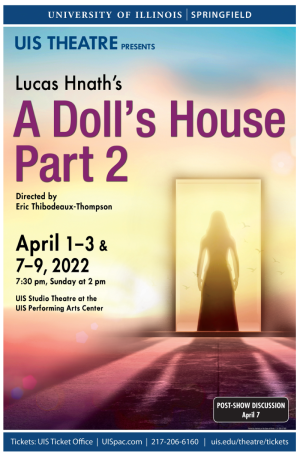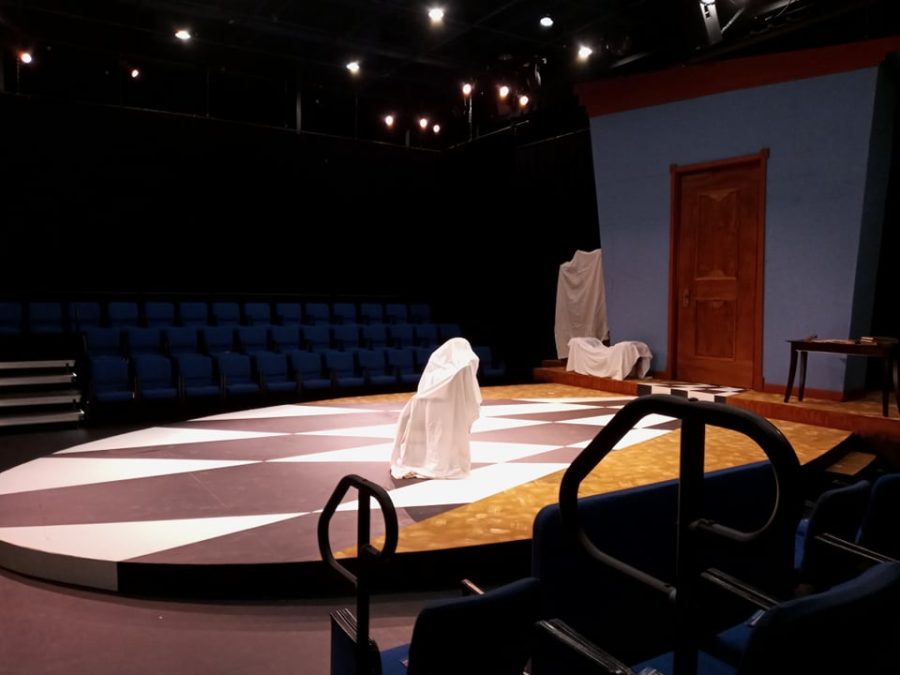A Doll’s House Part 2
The meanings of feminism, gender inequality, family, independence, selfishness, and individuality intersect in A Doll’s House Part 2. The University of Illinois at Springfield Theatre department is in the middle of a run of a student production of this famous sequel to an even more famous late 19th-century play.
Although the name implies that the audience should see the original “A Doll’s House”, this is not necessary. There is enough context provided through the characters’ dialogue to minimize confusion and quickly clear up plot points from the original. “A Doll’s House Part 2” was written in 2017 by Lucas Hnath and acts as a sequel to the 1879 play “A Doll’s House” by Henrik Ibsen.
The original play explores a woman who comes to believe that her life is greater than her marriage to her husband and realizes that she should leave the marriage altogether. It explores the role of marriage in 19th-century Norwegian society. The play could have easily taken place in America, and, with the exception of a few words, it could have taken place in any Western nation. Part 2 was written 140 years later and asks modern audiences how much has changed and how much has stayed the same in the past 140 years.
With few props outside of a couple of chairs and no set changes, the actors’ dialogue carries the play. At its core is a woman named Nora (UIS Senior Nia Tiller) who left her husband Torvald (UIS Freshman Carter Coryell) 15 years ago. Torvald lives with Anne Marie (UIS student Stephanie Reynolds), the nanny of his now-adult children. The cast is fleshed out with Torvald’s daughter, Emmy (UIS student Kayla Sarabia), who was a young child in the original play but is now an adult with full opinions and motivations. With a mostly minimalist approach and little visual clutter, these four cast members are the core of the production, and their acting forces the audience to ponder the questions asked of them. Every character sees their situation as morally black-and-white when all are morally gray. The friction between polar opposite viewpoints that are both right and wrong at the same time casts doubt on whatever belief a viewer chooses to adopt. The venue is perfect for such a personal narrative, as the Auditorium in the basement of the Public Affairs Center is a very intimate location. The furthest seat from the stage is perhaps 20 feet away and the actors are close enough to almost feel as if they are talking to the viewer.
 Although not a happy play, it is one that should be highly recommended due to how it makes a viewer think about both the past and the present. The UIS Theater will be having showings on April 7, 8, and 9th at 7:30 PM. Costs range from $6 for children to $14 for adults, with UIS students being charged $8 for admittance. More information can be found at https://www.uis.edu/theatre/productions/
Although not a happy play, it is one that should be highly recommended due to how it makes a viewer think about both the past and the present. The UIS Theater will be having showings on April 7, 8, and 9th at 7:30 PM. Costs range from $6 for children to $14 for adults, with UIS students being charged $8 for admittance. More information can be found at https://www.uis.edu/theatre/productions/
The author was not compensated by the UIS Theater Department and attended the April 2 show at the student cost of $8













